
控制与决策学报(英文)(Journal of Control and Decision) 知网目次维普目次
- 国级普刊
- 主管单位:
教育部
- 主办单位:
东北大学
- 国际刊号:
: 2330-7706;EISSN: 2330-7714
- 国内刊号:
21-1593/TP
- 学科分类:
- 字数:
12000-30000
- 有无基金:
- 周期:
CN外文-季刊
- 特殊属性:
外文期刊
- 电话:
- 邮箱:
tengrong@ise.neu.edu.cn(公众号信息)
- 复合因子:
0
- 综合因子:
0
- 收录:
知网目次,维普目次
- 级别:
国级普刊
期刊简介
《控制与决策学报》期刊已被查看: 次
更新频次
单位占比
一作占比
投稿指南
1、投稿方式:在线投稿。
2、官网网址:
http://www.tandfonline.com/toc/tjcd20/current
3、投稿系统:
https://rp.tandfonline.com/submission/create?journalCode=TJCD
4、邮箱:tengrong@ise.neu.edu.cn(微信公众号信息)
5、出刊日期:季刊,逢季首月出版。
6、官方微信公众号:控制与决策(CD_1986neu)
2024年4月18日星期四
《控制与决策学报(英文)》期刊简介
(Journal of Control and Decision)
【微信公众号“CD_1986neu”信息】
《Journal of Control and Decision》创办于2014年,由东北大学主办,拥有以东北大学王福利教授任主编,新加坡南洋理工大学温长云教授任执行主编,东北大学杨光红教授、美国纽约大学姜钟平教授任副主编,以及多位在控制与决策领域具有很深造诣的国际知名专家任高级编委的,具有高国际知名度和学术影响力的编辑委员会队伍。
创刊以来,JCD稳步发展,始终将学术质量摆在首位,确保稿件的前瞻性、导向性、创新性和实用性,相继发表了多篇国内外高水平的研究成果,得到了业界专家学者的广泛关注,影响因子逐年提升。
JCD取得的成绩与广大专家学者的关注与支持密不可分,我们将以此为新的契机和动力,不忘初心,努力迈上更高的台阶,致力为广大科研工作者和高校师生构建一个具有权威性的、高水平的国际学术交流平台。
《Journal of Control and Decision》网站:
https://www.tandfonline.com/toc/tjcd20/current
邮箱:tengrong@ise.neu.edu.cn
《控制与决策学报(英文)》作者须知
(Journal of Control and Decision)
【官网信息】
Instructions for authors
About the journal
Journal of Control and Decision is an international, peer reviewed journal, publishing high-quality, original research. Please see the journal’s Aims & Scope for information about its focus and peer-review policy.
Please note that this journal only publishes manuscripts in English.
Open Access
You have the option to publish open access in this journal via our Open Select publishing program. Publishing open access means that your article will be free to access online immediately on publication, increasing the visibility, readership and impact of your research. Articles published Open Select with Taylor & Francis typically receive 32% more citations* and over 6 times as many downloads** compared to those that are not published Open Select.
Your research funder or your institution may require you to publish your article open access. Visit our Author Services website to find out more about open access policies and how you can comply with these.
You will be asked to pay an article publishing charge (APC) to make your article open access and this cost can often be covered by your institution or funder. Use our APC finder to view the APC for this journal.
Please visit our Author Services website or contact openaccess@tandf.co.uk if you would like more information about our Open Select Program.
*Citations received up to Jan 31st 2020 for articles published in 2015-2019 in journals listed in Web of Science®.
**Usage in 2017-2019 for articles published in 2015-2019.
Peer review
Taylor & Francis is committed to peer-review integrity and upholding the highest standards of review. Once your paper has been assessed for suitability by the editor, it will then be double blind peer-reviewed by independent, anonymous expert referees. Find out more about what to expect during peer review and read our guidance on publishing ethics.
Preparing your paper
Structure
Your paper should be compiled in the following order: title page; abstract; keywords; main text; acknowledgements; references; appendices (as appropriate); table(s) with caption(s) (on individual pages); figure caption(s) (as a list).
Word limits
Please include a word count for your paper. A typical manuscript for this journal should be no more than 10000 words; this limit includes tables, figure captions, references, footnotes, endnotes.
Please strictly follow the template provided for this journal and do not modify any part thereof.
The length of the paper should not exceed 15 pages. Additional pages will be charged, up to a maximum length of 20 pages. Papers exceeding the page limit (max 20) will not be accepted.
Style guidelines
Please refer to these style guidelines when preparing your paper, rather than any published articles or a sample copy.
Please use British -ise spelling style consistently throughout your manuscript.
Please use single quotation marks, except where 'a quotation is "within" a quotation'. Please note that long quotations should be indented without quotation marks.
Formatting and templates
Papers may be submitted in any standard format, including Word and LaTeX. Figures should be saved separately from the text. To assist you in preparing your paper, we provide formatting templates.
A LaTeX template is available for this journal.
Word templates are available for this journal. Please save the template to your hard drive, ready for use.
If you are not able to use the templates via the links (or if you have any other template queries) please contact us here.
References
Please use this reference style guide when preparing your paper. An EndNote output style is also available to assist you.
Checklist: what to include
Author details. All authors of a manuscript should include their full name and affiliation on the cover page of the manuscript. Where available, please also include ORCID identifiers and social media handles (Facebook, Twitter or LinkedIn). One author will need to be identified as the corresponding author, with their email address normally displayed in the article PDF (depending on the journal) and the online article. Authors’ affiliations are the affiliations where the research was conducted. If any of the named co-authors moves affiliation during the peer-review process, the new affiliation can be given as a footnote. Please note that no changes to affiliation can be made after your paper is accepted. Read more on authorship.
A non-structured abstract of more than 100 and no more than 150 words. Read tips on writing your abstract.
You can opt to include a video abstract with your article. Find out how these can help your work reach a wider audience, and what to think about when filming.
3-6 keywords. Read making your article more discoverable, including information on choosing a title and search engine optimization.
Funding details. Please supply all details required by your funding and grant-awarding bodies as follows:
For single agency grants: This work was supported by the [Funding Agency] under Grant [number xxxx].
For multiple agency grants: This work was supported by the [funding Agency 1]; under Grant [number xxxx]; [Funding Agency 2] under Grant [number xxxx]; and [Funding Agency 3] under Grant [number xxxx].
Disclosure statement. This is to acknowledge any financial interest or benefit that has arisen from the direct applications of your research. Further guidance on what is a conflict of interest and how to disclose it.
Biographical note. Please supply a short biographical note for each author. This could be adapted from your departmental website or academic networking profile and should be relatively brief.
Data Availability Statement: If there is a data set associated with the paper, please provide information about where the data supporting the results or analyses presente¬d in the paper can be found. Where applicable, this should include the hyperlink, DOI or other persistent identifier associated with the data set(s). Templates are also available to support authors.
Data deposition. If you choose to share or make the data underlying the study open, please deposit your data in a recognized data repository prior to or at the time of submission. You will be asked to provide the DOI, pre-reserved DOI, or other persistent identifier for the data set.
Geolocation information. Submitting a geolocation information section, as a separate paragraph before your acknowledgements, means we can index your paper’s study area accurately in JournalMap’s geographic literature database and make your article more discoverable to others.
Supplemental online material. Supplemental material can be a video, dataset, fileset, sound file or anything which supports (and is pertinent to) your paper. We publish supplemental material online via Figshare. Find out more about supplemental material and how to submit it with your article.
Figures. Figures should be high quality (1200 dpi for line art, 600 dpi for grayscale and 300 dpi for color, at the correct size). Figures should be saved as TIFF, PostScript or EPS files. More information on how to prepare artwork.
Tables. Tables should present new information rather than duplicating what is in the text. Readers should be able to interpret the table without reference to the text. Please supply editable files.
Equations. If you are submitting your manuscript as a Word document, please ensure that equations are editable. More information about mathematical symbols and equations.
Units. Please use SI units (non-italicized).
Using third-party material in your paper
You must obtain the necessary permission to reuse third-party material in your article. The use of short extracts of text and some other types of material is usually permitted, on a limited basis, for the purposes of criticism and review without securing formal permission. If you wish to include any material in your paper for which you do not hold copyright, and which is not covered by this informal agreement, you will need to obtain written permission from the copyright owner prior to submission. More information on requesting permission to reproduce work(s) under copyright.
Submitting your paper
This journal uses ScholarOne Manuscripts to manage the peer-review process. If you haven't submitted a paper to this journal before, you will need to create an account in the submission centre. Please read the guidelines above and then submit your paper in the relevant author centre where you will find user guides and a helpdesk.
If you are submitting in LaTeX, please convert the files to PDF beforehand (you may also need to upload or send your LaTeX source files with the PDF).
Please note that Journal of Control and Decision uses Crossref™ to screen papers for unoriginal material. By submitting your paper to Journal of Control and Decision you are agreeing to originality checks during the peer-review and production processes.
……
更多详情:
https://www.tandfonline.com/action/authorSubmission?show=instructions&journalCode=tjcd20
《控制与决策学报》同类自动化|计算机期刊
-
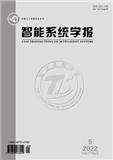
智能系统学报
北核,CSCD,科核,武A-,高T2,高T3
CN中文-双月刊影响因子3.06
-
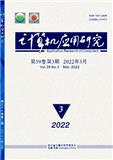
计算机应用研究
北核,科核,CSCD扩,武A,高T3
CN中文-月刊影响因子2.277
-
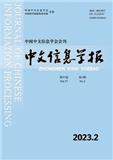
中文信息学报
北核,CSCD,科核,武A-,高T1
CN中文-月刊影响因子3.09
-
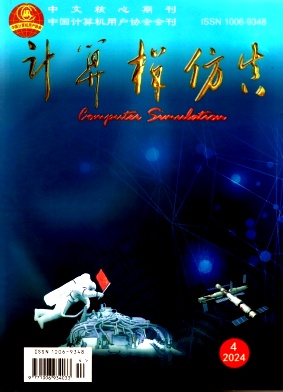
计算机仿真
科核,高T2,高T3,武B+
CN中文-月刊影响因子0.859
-
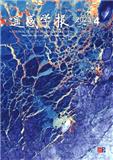
遥感学报
北核,CSCD,科核,武A+,高T1,EI(中国2024)
CN中文-月刊影响因子4.509
-

电子政务
C刊,北核,AMI核心,武A
CN中文-月刊影响因子7.278
-
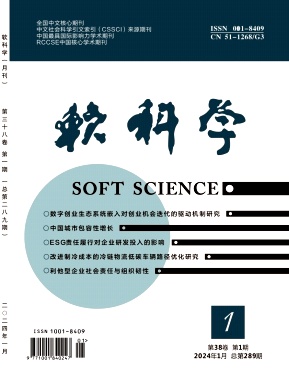
软科学
C刊,北核,科核,武A,AMI扩
CN中文-月刊影响因子4.84
-
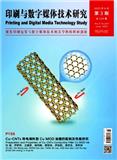
印刷与数字媒体技术研究(原:数字印刷;中国印刷与包装研究;中国印刷物资商情)
北核
CN中文-双月刊影响因子0.753
常见问题
-
控制与决策学报杂志社官网、联系方式是什么?
控制与决策学报杂志社官网:http://www.tandfonline.com/toc/tjcd20/current
投稿网址:https://rp.tandfonline.com/submission/create?journalCode=TJCD
投稿邮箱:tengrong@ise.neu.edu.cn(公众号信息) -
控制与决策学报杂志是核心期刊么?
控制与决策学报不是核心期刊,级别是:国级普刊, 是:自动化|计算机分类下的知网目次,维普目次收录的期刊。
-
请问你们是控制与决策学报杂志社吗?
我们不是《控制与决策学报》杂志社。本站主要从事期刊信息展示与期刊推荐,不是任何杂志官网,直投稿件请联系杂志社。本站仅提供免费的学术指导、论文辅导、期刊投稿信息整理收集服务。
-
你们指导服务后可以保证文章被发表吗?
期刊发表的成功与否,主要取决于文章内容的质量。编辑老师会根据研究领域、创新性等多因素进行考量。我们会帮助您理解期刊的发表要求,助力提升发表几率,从而增加发表的机会。
-
晋级论文能否在报纸上发表?
在学术界,论文的发表往往被视为研究者职业发展的重要一环。晋级论文,即为了获得更高职称或学术地位而撰写的学术论文,通常需在专业期刊上发表。然而,许多人可能会问
